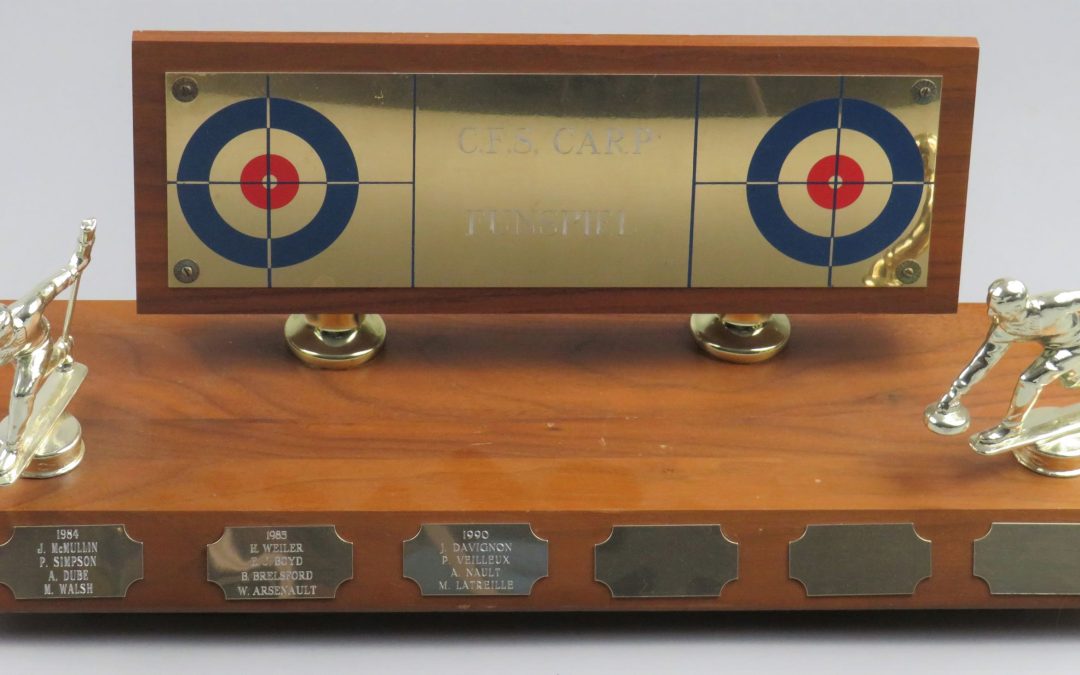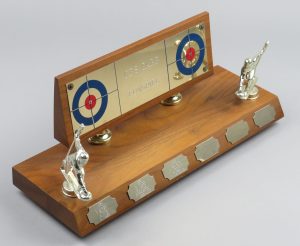
(7/25)
In honour of the Diefenbunker’s 25th anniversary, we continue to highlight 25 artifacts from within our collections. This week, in order to bring some chill to an otherwise hot and humid summer, we are featuring a curling trophy from 1984!
Curling is a sport that has historically been aligned with the military, however, it is believed to have originated in 16th century Scotland. The name “curling” is derived from the Scottish (and English) verb “curl” used to describe the motion of the stone. Curling is played in teams of two, each with four players, that take turns sliding polished granite stones across a curling sheet — an ice playing surface carefully prepared to be as flat and level as possible — with the goal of having the stones reach a target area at one end of the sheet known as the “house.” This area is segmented into four concentric circles and is outlined on the ice in blue and red.

Curling Trophy, Diefenbunker Museum: 2002.005.003
This curling trophy is wooden and rectangular in shape and was manufactured by local Ottawa company Earl Bullis Limited, who used to specialize in trophies and engravings. There is a gold figurine on either end of the trophy, each depicting a person playing the sport. Behind this, affixed lengthwise in the centre of the trophy, is a golden metal piece depicting a curling sheet and inscribed with C.F.S Carp Funspiel. The term “Funspiel” can be used to refer to a curling tournament with the purpose of fundraising. Given this, it is likely that this trophy was awarded to the winning team of a curling tournament held by Canadian Forces Station (CFS) Carp. CFS Carp hosted various curling tournaments as fundraising events. Lining the base of this curling trophy are small silver plaques engraved from 1984, 1985, and 1990 with winners’ names.
Curling was used as an outlet and was frequently played by military personnel as a leisure activity. The origins of curling in Canada can be traced back to 1910 when it gained popularity through major societal changes including the introduction of the five-day work week. These changes permitted the opportunity for extended leisure pursuits during what became known as the “weekend.” Through its long history, curling not only gained popularity in the military, but it also became a sport attractive to all levels of society. The sport has undergone several changes over the years including the movement from outdoor ice to covered rinks, the creation of artificial ice, and the growth of friendly matches between adjacent towns — which eventually evolved to regional, provincial, national, then world championships, and finally to the introduction of curling to the Olympics.
Stay tuned as we continue to celebrate our 25th anniversary by uncovering stories from our museum’s collections.
